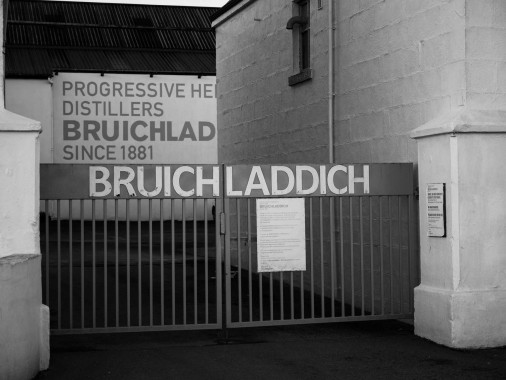 Robert Burns: Scotland's most famous whisky lover
Robert Burns: Scotland's most famous whisky lover Celebrated with his very own day on 25th January and famous for his ‘Freedom an' whisky gang thegither!’, Rabbie Burns is possibly the most famous Scot (and whisky drinker) ever to have lived. Yet, his relationship with the spirit was as contradictory as his character: while heaping praise on the drink or bemoaning the ever-tightening distilling regulations, Burns also worked as an exciseman- the dreaded enforcer of tax-paying and buster of illicit stills in 18th and early 19th century Scotland.
Wi’ tippery, we fear nae evil, wi’ usquabae, we’ll face the devil!
Robert Burns, 'The Author's Earnest Cry And Prayer', 1786
We know that Burns tried a range of whiskies in his life. He came from the Argyllshire coast, a region where whisky from the islands would be smuggled to and sold in market towns or transported further to Glasgow. Operating farms including Lochlea Farm, now the site of Lochlea Distillery, Burns is also likely to have tried locally made, illicit whisky from small stills, commonly made by farming families at the time to supplement their income. Yet, following the publication of his poetry, Burns also enjoyed the ears of aristocrats and the gentry. He was invited to readings and suppers in some of Scotland’s grandest houses during his time in Edinburgh, where it is also possible that whisky or whisky-based drinks were served. In many ways, Burns embodied early romanticism, with his Scots-language poetry, farming background, and out-spoken love for whisky. This romantic movement developed into the 19th century, eventually seeing people from all walks of life gain an interest in rural, traditional ways of living, which in Scotland included whisky drinking.
More than simply drinking the spirit, Burns also wrote about whisky in his works, most famously in 'The Authors Earnest Cry and Prayer' and 'Scotch Drink'. In the latter, Burns expresses the same distraught outpouring that many a whisky lover experiences today at the closure of treasured distilleries. In 1784, a change in the excise law caused the closure of Ferintosh Distillery in the Black Isle. The Highland distillery was one of the most popular in the 18th century, and Burns articulated what a loss it was to Scotland.
Thee, Ferintosh! Oh, sadly lost!
Scotland lament frae coast to coast!
Now colic grips, and barkin' hoast
May kill us a';
For loyal Forbes's charter'd boast
Is ta'en awa'!
Robert Burns, 'Scotch Drink', 1785
After the closure of Ferintosh, we know that Burns was also familiar with Lowland whisky, mentioning “dear Kilbaigie” in his cantata The Jolly Beggars. The song is about vagrants in Ayrshire, implying perhaps that the early industrial whisky operations by the Stein and Haig families of Clackmannanshire did not enjoy quite the same favourable reputation as the beloved Ferintosh.
Since his death over 225 years ago, Burns has gained mythical status as a figure who symbolises everything from worker’s and women’s rights to Scotland’s nationhood and the benefits of gathering socially for a dram. For over two centuries, Scots, the Scottish diaspora, and other communities around the world have celebrated Burns on his birth date, 25th January. Whether a large, ceremonial occasion complete with piping in the haggis or simply an excuse for a relaxed gathering of friends, Burns Night involves whisky in almost every instance. His poetry will no doubt be read in his native Scots, standard English or one of the many clever translations that bring the bard’s words around the globe. Undoubtedly, someone will get misty-eyed after the romantic poetry and a couple of drams. Indeed, the whisky industry certainly doesn’t shy away from getting sentimental about Burns. Bottlings celebrating his poetry, life or major anniversaries such as the 250th year since his birth include limited releases from lost distillerires, exciting young names in the industry as well as the biggest names in the business. Read on to discover some of our favourites below…
 Lochlea Distillery, Home of Robert Burns called Lochlea his home during his formative years
Lochlea Distillery, Home of Robert Burns called Lochlea his home during his formative years
Glenfarclas 1976 Cask Strength Edition No.2 / Robert Burns
Cask strength Glenfarclas is always popular among collectors and the many followers of the family-owned Speyside distillery. This bottle is an exclusive for the German market, appropriate for a nation who embraced Scottish romanticism almost from the start, with translations of Burn’s poetry appearing in Germany as early as a few years after the poet’s death.
Macallan Robert Burns / 250th Anniversary
This is an incredibly rare bottle of Macallan limited to just 250 bottles and released to commemorate the 250th anniversary of Burn’s birth (1759 -2009). It combines two casks chosen by Bob Dalgarno, one from 1997 and one from 1998, both cask numbers #1759.
Lochside 1966 Helmsdale / Poems from Robert Burns
This whisky was distilled in 1966 at the now-closed distillery Lochside in Montrose. One of only 189 bottles, it was made for the Poems for Robert Burns series by the Helmsdale bar of Tokyo, Japan.
Bruichladdich 1989 Valinch 'Robert Burns 250th Anniversary' / Feis Ile 2009
Bruichladdich’s Valinch bottlings are 50cl single cask releases, available exclusively from the distillery. This Masterclass Valinch was bottled for the 2009 Open Day at the Feis Ile festival, fittingly for Burns who loved both music and the water of life.
Lochlea 5 Year Old
The first age statement from the distillery based at the farm where Robert Burns grew up, the Lochlea 5 Year Old is a vatting of five different casks from the distillery. Aiming to show the character of the house spirit, it is an exciting milestone for fans of the young distillery that has impressed the industry since its foundation and is fittingly released on Burns Night 2024.







